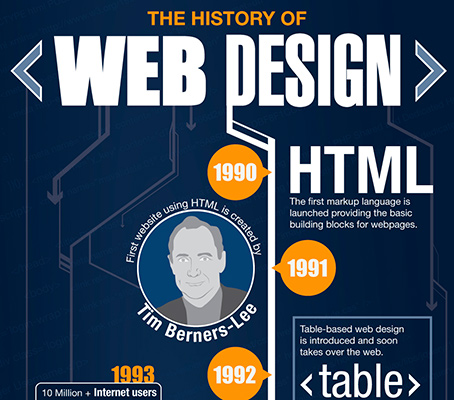Intrigued In Learning How Web Site Style Has Transformed Over The Years? Explore The Journey
Intrigued In Learning How Web Site Style Has Transformed Over The Years? Explore The Journey
Blog Article
Content Written By-Hartley Clarke
In the past, internet sites were basic and concentrated on details. Navigating was direct, and layout was for desktops. Now, individual experience is crucial. Data overviews styles for simple navigating. Receptive formats suit different devices. Today, dark mode minimizes pressure, and minimalist food selections improve navigation. Interactive attributes engage users, and vibrant visuals stand out. AI assimilation increases interaction. See exactly how layout has actually evolved to improve your online journey.
Early Days of Web Design
In the early days of web design, simplicity reigned supreme. Internet sites were basic, with limited shades, typefaces, and designs. The emphasis got on providing info as opposed to flashy visuals. Individuals accessed the internet with slow dial-up links, so rate and capability were crucial.
Navigating food selections were straightforward, normally situated on top or side of the page. Internet sites were created for home computer, as mobile browsing had not been yet prevalent. Web content was king, and developers focused on very easy readability over complicated layout aspects.
HTML was the main coding language used, and designers had to function within its restrictions. Computer animations and interactive features were minimal compared to today's requirements. Internet sites were static, with little vibrant web content or tailored customer experiences.
Surge of User-Focused Design
With the evolution of website design, a shift towards user-focused style principles has come to be increasingly prominent. Today, creating sites that prioritize individual experience is vital for involving visitors and accomplishing service objectives. User-focused layout includes recognizing the requirements, choices, and actions of your target audience to customize the website's design, content, and features accordingly.
Developers now perform thorough study, such as individual surveys and usability testing, to gather insights and comments straight from customers. This data-driven approach aids in producing intuitive navigating, clear calls-to-action, and aesthetically attractive interfaces that reverberate with visitors. By putting the customer at the center of the design procedure, web sites can provide an extra tailored and delightful experience.
Receptive style has additionally become a crucial aspect of user-focused layout, ensuring that internet sites are maximized for different devices and screen dimensions. This flexibility improves accessibility and usability, satisfying the varied ways customers connect with internet sites today. Basically, the rise of user-focused style represents a shift towards developing electronic experiences that focus on the demands and expectations of completion customer.
Modern Trends in Website Design
Check out the latest trends shaping website design today. One noticeable pattern is dark setting style, offering a smooth and modern appearance while minimizing eye stress in low-light atmospheres. An additional key fad is minimal navigation, streamlining menus and enhancing individual experience by concentrating on essential elements. Incorporating micro-interactions, such as animated buttons or scrolling results, can produce a more interesting and interactive internet site. https://www.cmswire.com/digital-marketing/6-podcast-marketing-tips-for-better-listener-adoption/ remains critical, making sure smooth customer experiences across various devices. In addition, using bold typography and unbalanced designs can add aesthetic passion and accentuate particular content.
Integrating AI technology, like chatbots for consumer assistance or personalized referrals, improves customer interaction and enhances procedures. Access has additionally become a considerable pattern, with designers prioritizing comprehensive design methods to deal with diverse individual needs. Accepting sustainability by maximizing site efficiency for rate and performance is another arising fad in website design. Collaborating with user comments and information analytics to repeat and improve style constantly is vital for remaining relevant in the ever-evolving digital landscape. By embracing these modern-day patterns, you can produce an aesthetically appealing, user-friendly web site that resonates with your target market.
Final thought
As you assess the development of web site style from the very early days to now, you can see exactly how user-focused design has ended up being the driving force behind modern patterns.
Embrace the journey of modification and adaptation in web design, constantly keeping the individual experience at the center.
Tippingpointdigital
Stay present with the most recent trends and technologies, and never ever quit developing your strategy to create aesthetically sensational and user-friendly internet sites.
Advance, adapt, and develop - the future of website design remains in your hands.
